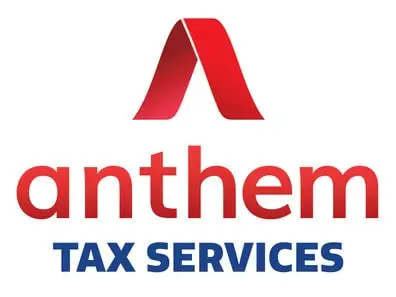
Dealing with the IRS is rarely a fun affair. However, they are the central governing body when it comes to taxes, so it’s important that you gain all the knowledge you can about how to navigate their procedures and guidelines to fulfill your legal requirement to pay income taxes. With how complicated the tax filing system can often be, it is not uncommon for people to owe large sums of money to the IRS, especially if errors have been found that date back years in the past.
It’s important that you know that if you do find yourself in debt with the IRS, that all is not lost. There is plenty of action that you can take to ensure that your financial future is secured and that you do not have to let a debt to the IRS ruin your financial life. Those that find themselves in debt with the IRS are often put on payment plans to allow them to slowly, steadily pay their way to a current balance.
In this guide, we are going to walk you through some of the payment plans that the IRS has available and what they would mean, should you choose to use them. With our tax debt relief guide in hand, you’ll be able to navigate the complicated world of tax debt effectively.
Preliminary Steps To Setting Up A Payment Plan With The IRS
Before you start exploring the payment plan options that are available to you through the IRS, there are some important steps that you should take beforehand. Tax debt can be a complicated subject, so there’s no need to make it more complicated and difficult for yourself. Follow some simple steps to set you up for success when it comes to managing your IRS debt.
The first thing that you’re going to want to do is file any returns for the past several years that have not already been filed. Being in tax debt is enough without having to add on failure-to-file penalties, which can make a bad situation worse.
The next thing that you want to do is work with a tax professional to take a look at any correspondence that the IRS has sent you regarding your debt. It may not pay off, but having them look over what you owe and verify that the IRS has not made a mistake is definitely worth the small investment. This could save you thousands of dollars if the debt has been erroneously calculated. If you are doing the calculations yourself, you should be sure to count any penalties and interest that have been applied to the amount that the IRS says you owe.
If you owe an amount that exceeds $10,000, it’s probably a good idea to get a CPA or tax attorney involved either way. When the amount is so high, it’s usually a good investment to have a professional advocate on your behalf to try and lower the amount or provide you with some options that can save you money.
Finally, you’ll want to collect complete records of your income, expenses, and any other financial information that is relevant to your taxes. This is information you will need while calculating your tax liability and it is probably information that the IRS will ask for when you begin to correspond regarding your debt.
Short-Term Payment Agreement
If you owe $10,000 or less to the IRS and you feel that you can pay the full amount within 120 days, the short-term payment agreement is the right option for you. This is usually used to settle smaller debts and provides you with a fee-free way to pay your IRS debts easily. There are no minimum monthly payments, but the debt does accrue interest. Because it accrues interest, it is best to pay these debts off as soon as possible.
Installment Agreement
For debts that are under $50,000, an installment agreement is usually reached. This is your option if you need more than 120 days to pay your debt to the IRS. With an installment agreement, you will pay the IRS on a monthly payment. You can pay the debt at your own pace and even have two installment agreements at once, but there is a monthly minimum payment, which is calculated based on how much you owe. These debts accrue interest, so the IRS recommends that you pay as much as you can upfront. These debts provide up to 6 years to pay the balance. To enter a payment plan like this one, you’ll need to provide your income and expenses to the IRS.
Large Debt Installment Agreement
For those with a debt that totals over $50,000, a special process is put in place. You will not be able to apply for an installment plan if your debt is greater than $50,000 and instead you will have to contact the IRS for an individual appointment. You will provide financial information such as accounts, balances, lines of credit, real estate assets, and your monthly income and expenses. Fees and interest apply for this agreement plan.
Small Business Plan
The small business IRS payment plan is designed specifically for small businesses that owe back taxes of $25,000 or less. These plans allow you to pay the balance that is owed to the IRS in a 24-month span, making the burden of the debt slightly less. There is a fee for this payment plan. You do not have to submit financial statements to be eligible for this payment plan.
Extension for Undue Hardship
If you are in a situation where you are unable to use any of the plans above and you need a more tailored approach, then you can apply for an extension for undue hardship. This means that you are telling the IRS that paying the debt would cause you “undue hardship”, which could mean significant investment losses, selling properties, and other effects. To do this, you’ll have to provide information to the IRS such as assets, liabilities, balances, itemized lists of expenses and income, and more. The IRS could provide you with an extension based on this information. Late fees would be waived in this situation. Usually, extensions last no longer than 18 months.
Offer in Compromise Agreement
If you are unable or unwilling to do what needs to be done to pay the debt that you owe to the IRS, you could enter into an offer in compromise agreement. This would include negotiating with the IRS to pay less than what is actually owed. You’ll have to provide information such as accounts, balances, assets, liabilities, income and living expenses, and more. This is usually approved for those that have assets that total less than what they owe to the IRS.
Recap on IRS Payment Plans
If you find yourself in debt to the IRS, don’t panic. There are systems in place that are designed to help those that need assistance and time to pay their debt to the IRS. If you need assistance with your tax debt, you can read our tax debt relief overview of the plans that are available to you and get in touch with our team of tax professionals by phone ((855) 749-2859) or email.
Dealing with the IRS is rarely a fun affair. However, they are the central governing body when it comes to taxes, so it’s important that you gain all the knowledge you can about how to navigate their procedures and guidelines to fulfill your legal requirement to pay income taxes. With how complicated the tax filing system can often be, it is not uncommon for people to owe large sums of money to the IRS, especially if errors have been found that date back years in the past.
It’s important that you know that if you do find yourself in debt with the IRS, that all is not lost. There is plenty of action that you can take to ensure that your financial future is secured and that you do not have to let a debt to the IRS ruin your financial life. Those that find themselves in debt with the IRS are often put on payment plans to allow them to slowly, steadily pay their way to a current balance.
In this guide, we are going to walk you through some of the payment plans that the IRS has available and what they would mean, should you choose to use them. With our tax debt relief guide in hand, you’ll be able to navigate the complicated world of tax debt effectively.
Preliminary Steps To Setting Up A Payment Plan With The IRS
Before you start exploring the payment plan options that are available to you through the IRS, there are some important steps that you should take beforehand. Tax debt can be a complicated subject, so there’s no need to make it more complicated and difficult for yourself. Follow some simple steps to set you up for success when it comes to managing your IRS debt.
The first thing that you’re going to want to do is file any returns for the past several years that have not already been filed. Being in tax debt is enough without having to add on failure-to-file penalties, which can make a bad situation worse.
The next thing that you want to do is work with a tax professional to take a look at any correspondence that the IRS has sent you regarding your debt. It may not pay off, but having them look over what you owe and verify that the IRS has not made a mistake is definitely worth the small investment. This could save you thousands of dollars if the debt has been erroneously calculated. If you are doing the calculations yourself, you should be sure to count any penalties and interest that have been applied to the amount that the IRS says you owe.
If you owe an amount that exceeds $10,000, it’s probably a good idea to get a CPA or tax attorney involved either way. When the amount is so high, it’s usually a good investment to have a professional advocate on your behalf to try and lower the amount or provide you with some options that can save you money.
Finally, you’ll want to collect complete records of your income, expenses, and any other financial information that is relevant to your taxes. This is information you will need while calculating your tax liability and it is probably information that the IRS will ask for when you begin to correspond regarding your debt.
Short-Term Payment Agreement
If you owe $10,000 or less to the IRS and you feel that you can pay the full amount within 120 days, the short-term payment agreement is the right option for you. This is usually used to settle smaller debts and provides you with a fee-free way to pay your IRS debts easily. There are no minimum monthly payments, but the debt does accrue interest. Because it accrues interest, it is best to pay these debts off as soon as possible.
Installment Agreement
For debts that are under $50,000, an installment agreement is usually reached. This is your option if you need more than 120 days to pay your debt to the IRS. With an installment agreement, you will pay the IRS on a monthly payment. You can pay the debt at your own pace and even have two installment agreements at once, but there is a monthly minimum payment, which is calculated based on how much you owe. These debts accrue interest, so the IRS recommends that you pay as much as you can upfront. These debts provide up to 6 years to pay the balance. To enter a payment plan like this one, you’ll need to provide your income and expenses to the IRS.
Large Debt Installment Agreement
For those with a debt that totals over $50,000, a special process is put in place. You will not be able to apply for an installment plan if your debt is greater than $50,000 and instead you will have to contact the IRS for an individual appointment. You will provide financial information such as accounts, balances, lines of credit, real estate assets, and your monthly income and expenses. Fees and interest apply for this agreement plan.
Small Business Plan
The small business IRS payment plan is designed specifically for small businesses that owe back taxes of $25,000 or less. These plans allow you to pay the balance that is owed to the IRS in a 24-month span, making the burden of the debt slightly less. There is a fee for this payment plan. You do not have to submit financial statements to be eligible for this payment plan.
Extension for Undue Hardship
If you are in a situation where you are unable to use any of the plans above and you need a more tailored approach, then you can apply for an extension for undue hardship. This means that you are telling the IRS that paying the debt would cause you “undue hardship”, which could mean significant investment losses, selling properties, and other effects. To do this, you’ll have to provide information to the IRS such as assets, liabilities, balances, itemized lists of expenses and income, and more. The IRS could provide you with an extension based on this information. Late fees would be waived in this situation. Usually, extensions last no longer than 18 months.
Compromise Agreement
If you are unable or unwilling to do what needs to be done to pay the debt that you owe to the IRS, you could enter into an offer in compromise agreement. This would include negotiating with the IRS to pay less than what is actually owed. You’ll have to provide information such as accounts, balances, assets, liabilities, income and living expenses, and more. This is usually approved for those that have assets that total less than what they owe to the IRS.
Recap on IRS Payment Plans
If you find yourself in debt to the IRS, don’t panic. There are systems in place that are designed to help those that need assistance and time to pay their debt to the IRS. If you need assistance with your tax debt, you can read our tax debt relief overview of the plans that are available to you and get in touch with our team of tax professionals by phone ((855) 749-2859) or email.


